#( curves&edges. )
Explore tagged Tumblr posts
Note
hump smth for us.
I wish it was your boot at least 😭 Maybe you’d let me choke on your cock as I humped you boot? 🥺
(Might delete. Little insecure about my belly 🫣)
#dumb slvt#attention slvt#cvmdump#desperate slvt#attention wh0r3#bd/sm community#c0cklover#cvm wh0re#c0ckwh0re#cvmslut#big tiddy committee#cvmslvt#c0ckslut#choke me daddy#choked out#c0ckwarming#c0cksleeve#good slvt#edge slvt#needy slvt#bd/sm slave#bimbo doll#bimboification#bimboization#bimbo girl#bimbo training#sexy curves#breeding k1nk#corruption kink#cnc free use
2K notes
·
View notes
Text

Trans beauty ❤️😇
Reblog if you love trans ❤️😇😘
#transgender#trans#trans beauty#trans pride#transgirl#lgbtq#mtf trans#trans community#trans woman#gay#gay men#gay couple#gay pride#lgbtq+#lgbt#lgbt pride#lgbtq community#queer community#sissy domination#curve#sissy ferminization#bd/sm master#bd/sm slvt#bdmslifestyle#bd/sm edging#queer
530 notes
·
View notes
Text


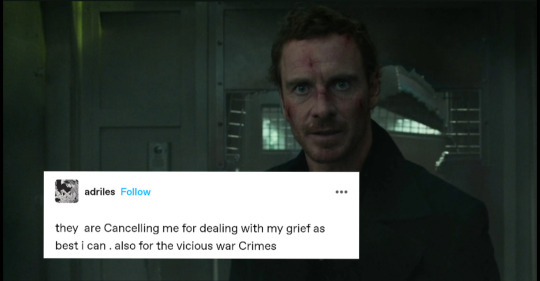


xmen + textposts [20/?]
#the edges of the images are messed up because i have a curved display and it's ruining things SOMEHOW.#not to mention i almost forgot how to make these. but. i'm glad to be back#charles xavier#erik lehnsherr#cherik#xmen + textposts
424 notes
·
View notes
Text

am i interrupting something
YOU ARRREEE 😁🫵‼️ alt version with charlies lipstick from this banger post of mine
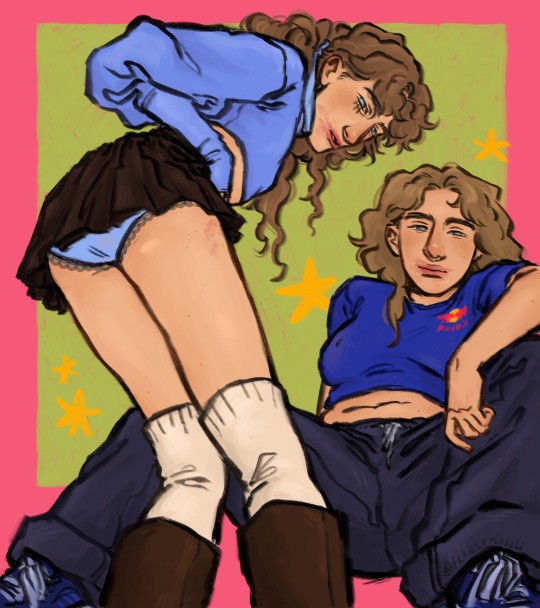
#open 2025 with gax yuri 😁#formula one#f1#george russell#max verstappen#rule 63#3363#girl drivers#WEEEHGGEHEGEEE#damn the perspective and anatomy looks so weird in small size in my phone... i thought i ate...#anyway georgie and her looong legs 😋 flat front back you want to eat her but shes skin and bone she rattles#her hair was in a neat bun but yknow. these two are violent#btw when i said i love exaggerating peoples shapes i was thinking of these two fr...#george long limbs and all hard lines & max soft curves and round edges#ok whatever#my art
690 notes
·
View notes
Text
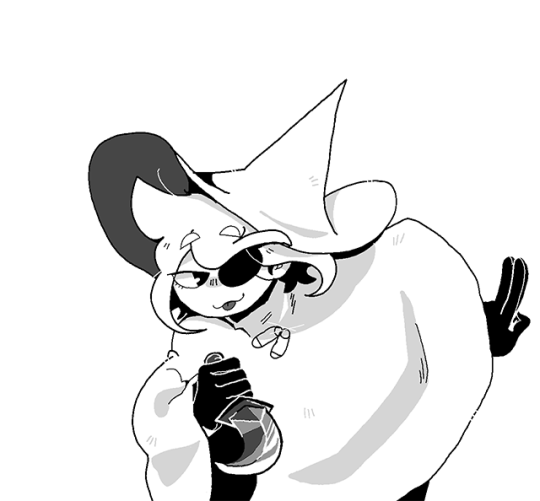

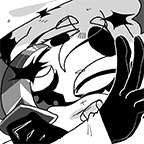
i need to teach him knife safety
#isat#also i'm gonna say it but i'm not the biggest fan of siffrin's knife design#curved knives.... eh. i don't think they're cool#but above all of that siffrin please stop having the sharp edge pointed Towards you please please
518 notes
·
View notes
Note
I have a sword question, if I may. Or more of a sword confusion Im seeking clarification on.
In my mind a fantasy european standard sword (that obviously doesnt really exist, but like, when a knight or someone in a story has an unspecified sword), I always imaged a straight blade with a triangular tip, both edges sharp cutting edges.
Then at some point I learned about eg scimitars that have a cutting edge and a ...blunt edge?
I was looking at your recent addition to the post about the Turkish sword, where you distinguish between an inner cutting edge on a sword v an outer cutting edge.
And then Im thinking of those enormous zweihander types that are all about momentum and do those even need a particularly sharp edge? They seem in dnd parlance to be a bludgeoning weapon not for slashing.
And while Im asking, like. Rapiers are very stabby weapons, do they have sharp edges at all or judt a sharp point?
I guess my overall question culminates something like "what parts of swords are designed for what damage and why? Is there anything all swords have other than blade and handle like can they all be used for stabbing or do some have very blunt points etc? Is it a big deal for a sword to be double-edged, does that necessitate specific training? Whats up with different sword blades?"
I realise thats a pretty enormous question that might be unreasonable to ask. Im happy with whstever response you are or arent willing to give. Hope you have a good day :)
Sharp edge / blunt edge is the setup on any kitchen or table knife you've ever encountered, and being able to put a hand on the blunt "edge" - usually called the back of the blade - not only helps when mincing herbs or garlic, but also features in some techniques of swordplay.
Other techniques employed non-blade parts of the weapon, using the pommel like a mace and the crossguard like a pick-axe.
*****
Whether swords should be straight or curved, single- or double-edged, was an argument which continued as recently as the early 1900s.
The last swords issued to cavalry for combat use (modern parade swords don't count) were both remarkably similar designs, straight-bladed for thrusting, adopted by the UK in 1908...

...and the US in 1913.

There was, of course, strong opposition from those who insisted cavalry swords should be sabres curve-bladed for cutting instead.
Equally of course, both sides failed to notice - or ignored, since a certain kind of cavalry officer was only bright as regards boots, buckles and buttons - the uncomfortable fact that machine-guns and repeating rifles had made the whole ta-ran-ta-rah "cut them down with your swords, men!" cavalry charge an exercise in futility.
*****
D&D, unless they've considerably upped their accuracy game, isn't much of a reference for weapon realism.
"Enormous Zweihanders" and other big swords such as the Montante were a lot lighter and more nimble than they'd seem from reading an encumbrance chart.
They had their own techniques to take best advantage of length, leverage and momentum and were indeed sharp. Given a choice between a sharp combat weapon and a blunt one, sharp makes far more sense.
In addition, a sharp blade is lighter than a blunt one simply through having less metal. It may only be a few grams of difference, but it IS a difference.
That's also the reason behind a fuller, the groove(s) along a blade.


They're not "blood gutters", tough and cool though that may sound, but a way to reduce a sword's weight while preventing its blade from getting excessively flexible.
Finally...
tumblr
The re-enactor is wearing half-armour, but these big swords were also meant for use against unarmoured opponents. Bodyguards often carried them (they looked impressive) and those sweeping strokes could block an entire street while The Boss got away.
That's when an ability to cut rather than merely bludgeon makes all the difference. Determined assassins might try to rush a blunt sword, but a sharp one would give anyone second thoughts...
*****
Double-edged swords versus single-edged ones seem to vary depending on cultural preference - also on period of history and intended function.
Bronze Age European swords had straight or leaf-shaped blades with double edges...

...while Ancient Egypt had the curved, single-edged khopesh, a shape which also turned up in Ancient Assyria (this one's in the Metropolitan Museum, New York USA).

It's listed as a "sickle sword", an incorrect term which I wish would go away because sickles are sharp on the inside of the curve while swords like this - their grip-shape shows how they're meant to be held and swung - are sharp on the outside.
And just when "the Ancient Middle East used curved single-edge swords" looks like a handy generalisation, along come straight swords, one from Ancient Egypt...

...another from Luristan, now part of modern Iran.

This next one comes from Ancient Iberia (Spain), right at the other side of the Mediterranean. Evidence of trading links? Your guess is as good as mine.

Iberia went on to use the falcata, a short single-edged forward-curved sword.

Those extra bits round the blade are scabbard metalwork; the wood and leather scabbard is long gone. This repro shows how they would have looked when in place.
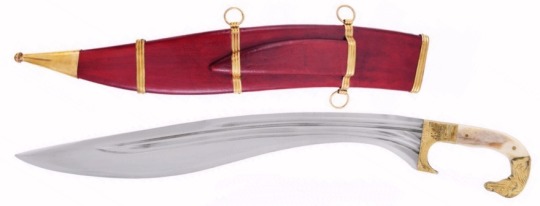
Iberia also used a straight double-edged sword which so impressed the Romans that they adopted it, refined it and used it for several centuries. Here's one of the several Roman versions of that gladius Hispaniensis (Spanish sword), double-edged, mostly meant for stabbing but capable of very effective cuts as well.

Here's my repro of a similar sword, the elegant "Mainz" pattern with its long point and waisted blade. Very pretty, and pretty wicked.

*****
"Curved single-edged swords are Eastern, straight double-edged swords are Western", is another generalisation that won't work.
Here are Eastern straight swords...


...and Western curved ones.

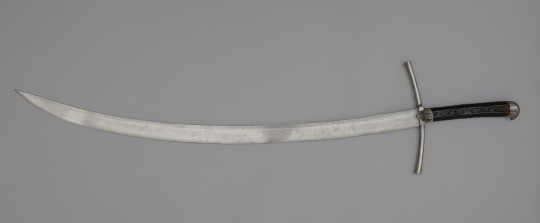
*****
Viking swords were all double-edged...

...except when they weren't.



*****
Many rapiers could cut. Smallswords, which came later, couldn't.
Earlier rapiers with broader blades cut better than later ones with narrow blades, but IIRC even the later Italian and Spanish rapier styles include cuts directed at the opponent's face and sword-arm.
I have a notion that the modern thing about cutting with rapiers is based (like back-carry) on seeing it done in movies. IMO - more about it here - that's actually more a modern stage-combat safety thing than a period real-combat move. A fumbled cut is bruising and unpleasant even with a "safe" prop sword, but a fumbled thrust into the eye-socket or throat with that same "safe" sword can be fatal.
Even those early rapiers wouldn't sever a head or limb - a finger maybe, hence the elaborate hand-protection of swept and cup hilts - but blood from a forehead wound running into the eyes was, and in boxing still is, an efficient way to finish a fight by ensuring the opponent can't continue. One of the duels in "The Duellists" ends this way.
This example is a bit optimistic, IMO...
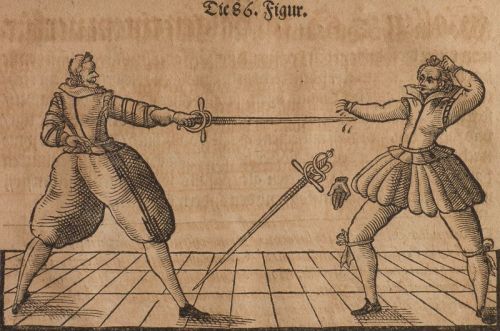
...but a longsword (double-edged)...

...or a messer (single-edged)...
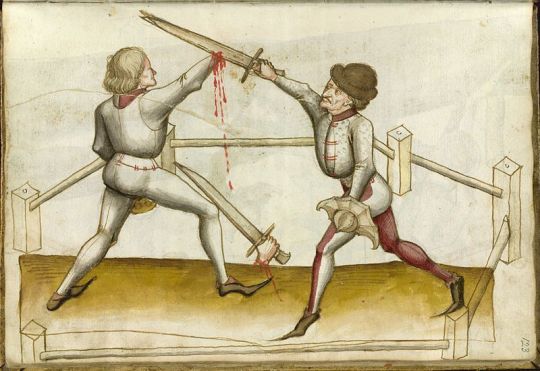
...was quite capable of disarming an opponent in a very literal way.
*****
Some swords had minimal points, being intended mostly for cutting. One example of this is the Indian khanda broadsword. The second example is also very clearly single-edged.


Another cut-only sword without a point (but with double edges) is the Richtschwert (justice sword)...


...though this was a single-function (and hopefully single-cut) tool rather than weapon, neither balanced for nor intended for combat.
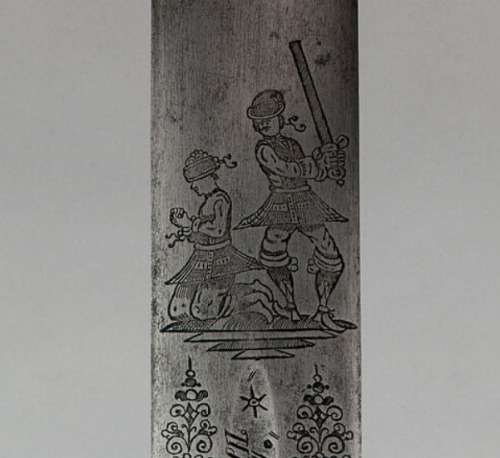
Hope this has helped answer the questions!
936 notes
·
View notes
Text

Ahhhh 👅🥰
#attentionslvt#attentionwh0re#desperate slvt#needy wh0re#cnc k!nk#r@pe wh0re#cnc fr33use#daddy’s brat#desperate wh0re#daddy’s wh0re#big tiddy slvt#big tiddy stoner#big tiddy alt girl#big tiddy problems#curvy and thixk#girls with curves#curvy af#curvy body#juicy body#thick and juicy#juicy lips#free use wh0re#cock wh0re#weed int0x#w33d int0x#st0ner#girls who smoke weed#smoke weed everyday#edge wh0re#im a wh0re
158 notes
·
View notes
Text

First time trying to draw these gays and got carried away oops
#im so normal these days#i need to get back to drawing Jesse and Preston angst art#hoooo#also i gave Tyler glasses bc i dont wanna think abt how to draw his eyes rn#probably sharp edges with soft curves#rottingcitrus#fight club#soapshipping#the narrator fight club#tyler durden#tyler durden fight club#fight club 1999#art#my art#artists on tumblr#blah blah blah the tags
154 notes
·
View notes
Text
So I was listening to the new Warframe Isleweaver soundtrack, and this song in particular REALLY caught me.
We dont currently have any instances of violin/viola that I can think of in warframes sound track that are that prevalent, and I was like, hmm. It uses Duviri's/the drifter's theme, but not in the regular way, and other than that its all over the place, its Kinda... lacking in regulation. It's highs and lows and oh my god its Thrax, isnt it.
Anyway. Now there's an image in my head of Thrax playing what I'm currently thinking of as a 5 string violin/viola combo that'd cover the whole register here, and atm I'm oscillating btween violinthi and vilthiari
(Vinthiri? Vilitha? vilithis? Violiri? Viliri? Violara? its gotta sound similar to how it would sound to play, while keeping the vi bit.)
#I cannot get over the themes of Duviri getting slowly overrun/corrupted by the murmur's chanting/beats and only starting to get its foothold#back from the edge of straight up desperation and panic once the more electric thumping beat thats used for our main universe is brought in#Like#He was truly#truly desperate#and the only reason why all of duviri didn't fall/why thrax himself wasnt corrupted was because he had us to turn to for help#The music in this game never ceases to absolutely floor me#the use of themes and everything is so insanely purposeful and brilliant#every song makes me wanna listen because I have been proved right time and time again that my trust in being able to read into it#is actually warranted.#warframe#warframe isleweaver#Bandcamp#Also#for duviri naming conventions what I've found through a bit of surface analysis is that every word is made in line with duviri's music them#Hard syllables that are used like hard syllables are more or less reserved for beginnings and endings of words exclusively#and everything in the middle tends to shy away from more complex/long vowel sounds in favor of shorter#snappier#versions#And each simple vowel of either upwards or downwards tilt is mediated via more neutral consonants which creates the rhythm youll hear#If it doesnt bring the tone back to the middle its usually because the next vowel is of the same curve#in which case it sort of bridges those two like a cursive r might#Acrithis for example is a slight downwards#then two sharp upwards syllables not quite dragged back down to neutral due to the th letting one I's curve to lift the second up as well#Thrax is a bit of an exception which I find interesting#bombastine works perfectly#You can tell shawzins didnt come from duviri specifically because the use of the awz creates way too complex of a sound on the a#Duviri word segments are sharp and distinct in a way that doesnt weight any one part of the word#imo#its all evenly powerful across the sound
78 notes
·
View notes
Text
Hi guys, I'm active tonight
Just ask for my menu
#daddy's bunny#daddy’s brat#daddy’s slvt#jcink premium#premium content#i sell newds#sims 4 custom content#bd/sm edging#beauttiful girls#hot as heli#girls with curves
29 notes
·
View notes
Text

#luke patterson#julie and the phantoms#jatf#music#guitar#pop punk#rock and roll#punk music#fuck you netflix for cancelling this beautiful show#guitar spin#jamming#singer songwriter#2020#ghost#dead for 25 years#street dogs#missing#unsaid emily#edge of great#Charlie Gillespie#Madison Reyes#tv series#netflix series#sunset curve#band#bands
220 notes
·
View notes
Text
the thing about school is it teaches you about the existence of 3D shapes but doesn't teach you how evil they are. having been an adult for some time now in three-dimensional space, where things get dirty in three dimensions and require cleaning, i can say that those fuckers always have more sides than you think they do and you have to clean all of them.
#take your humble doorway for example. a doorway is basically a rectangle. rectangles have four sides#a 3d rectangle (what is that even called? not a cube because not all the edges are equal length) has 6 faces and 12 edges#but a doorway is just the edges (no faces) AND you don't have to count the bottom which is just the floor#so you think maybe what. 9 edges? three sides and each side has an inside an outside and a center? that's not so bad#WRONG. TWENTY-SEVEN EDGES#because of the way the frame feels the need to like. keep curving around instead of just being a flat surface#for NO reason. except decorative i suppose#obviously i'm talking about specific doorways that are in my own home here ymmv but feel my pain. 7 doorways. 27 edges. fml#my posts#cleaning
29 notes
·
View notes
Text
Come grab a handful? 🥰🤭
#attentionslvt#attentionwh0re#desperate slvt#needy wh0re#cnc k!nk#r@pe wh0re#cnc fr33use#daddy’s brat#desperate wh0re#daddy’s wh0re#big tiddy stoner#big tiddy alt girl#big tiddy problems#big tiddy slvt#curvy and thixk#girls with curves#curvy af#curvy body#juicy body#thick and juicy#so juicy#juicy lips#natural body#bouncingthick and curvy#so bouncy#dumb slvt#free use wh0re#edge wh0re#cock wh0re#daddy’s slvt
121 notes
·
View notes
Text


Reblog for a dm 🍒
#daddy's good girl#bd/sm community#bd/sm kink#thickaf#daddy k!nk#fr33use#feetpose#use me pls#danganronpa#feetpics#stupid whores#sexy curves#so cute#attention seeking#sexy hunk#sexy tattoed woman#sexy older man#dad boyfriend#daddy knows best#daddy issues#bd/sm daddy#daddy’s babygirl#daddy’s wh0re#curvy body#bd/sm slave#bd/sm master#bd/sm blog#bd/sm breeding#bd/sm slvt#bd/sm edging
95 notes
·
View notes
Text
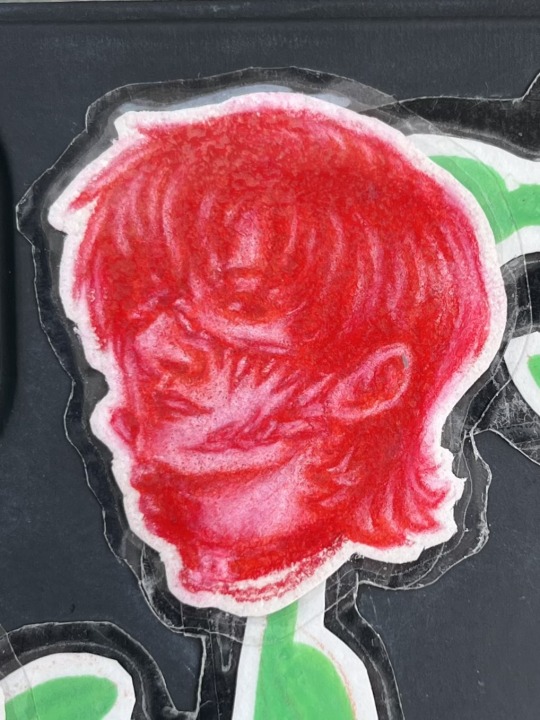

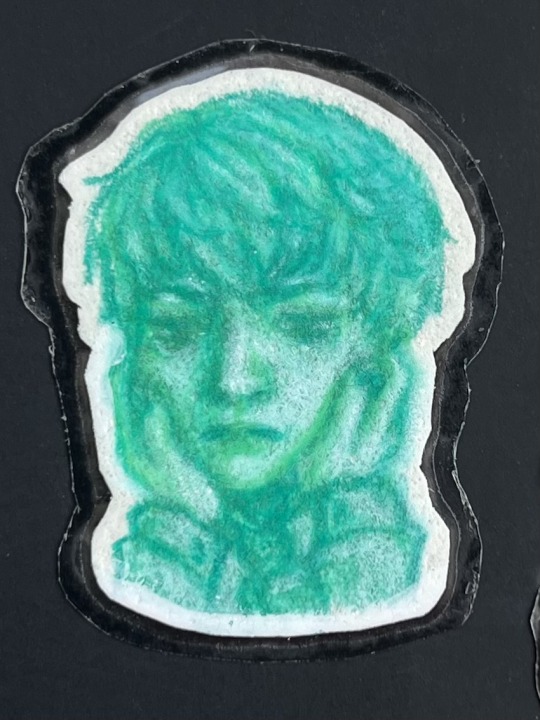
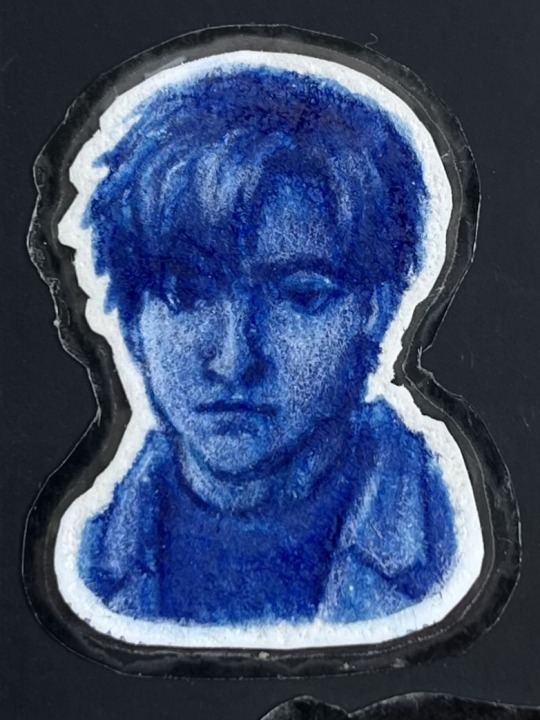
Here’s the little highlighter portraits I ended up turnin’ into DIY stickers
-
Actually did at least one for each LI, but these are my favs, so they’re gettin put up ✨
…That, and I can’t get Raf’s likeness for the life of mE (which, is frustrating and checks out for the exact same reason lmao)
-
Pic of them all below the cut!
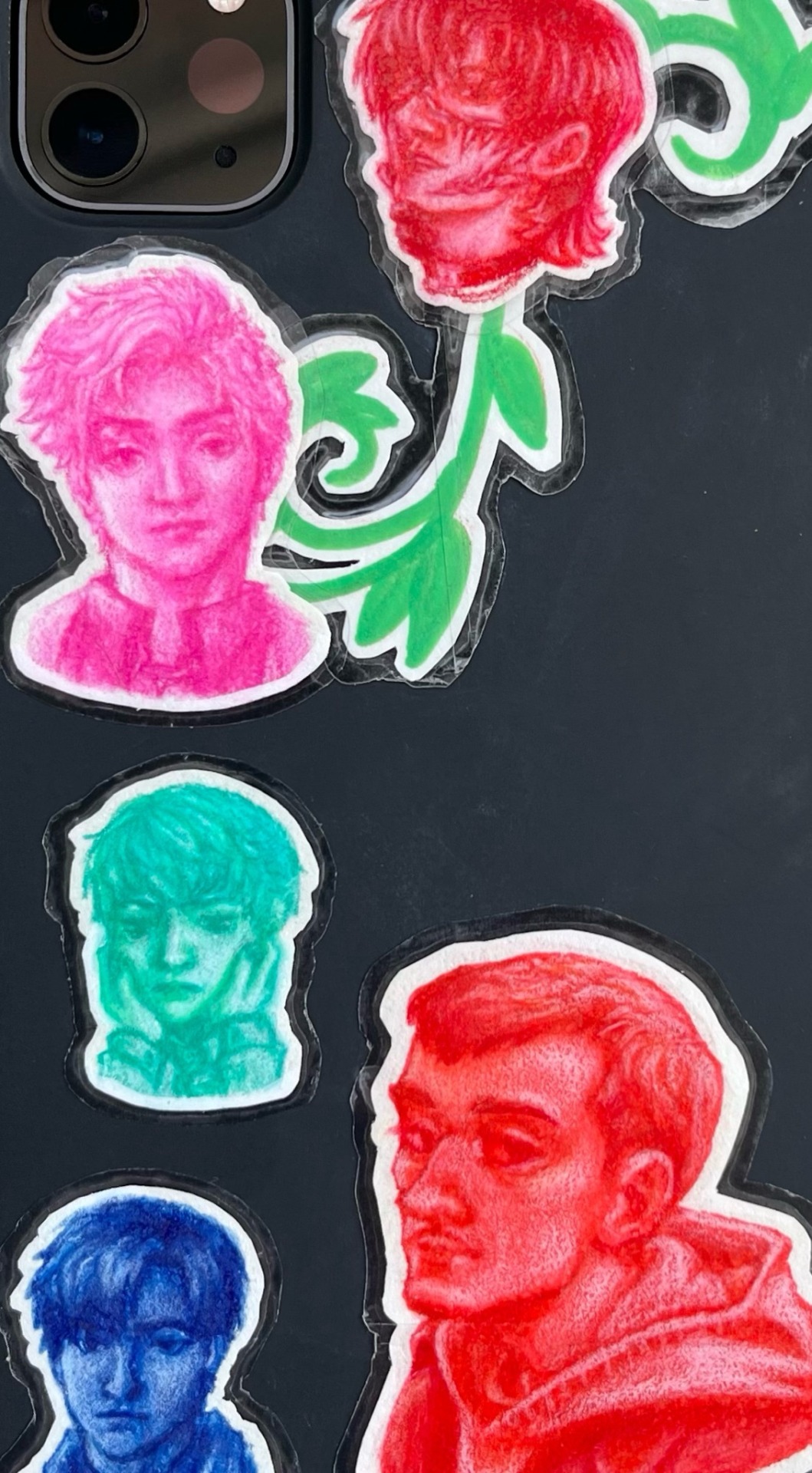
ft. a rogue Brian from Marble Hornets I did a while back when I was more in practice w/ these things
Bc that’s just how things happened to fit on the case pfftttt
-
We’re all just lucky this section isn’t as chaotic as the other side, truly truly truly
I mean, I absolutely adore both ofc, but ik it can be a looootttt for the eyes to absorb
#love and deepspace#lads#lnds#l&ds#love and deepspace fanart#lads fanart#lnds fanart#l&ds fanart#zayne lads#zayne love and deepspace#dr zayne#l&ds zayne#lads xavier#xavier love and deepspace#l&ds xavier#sylus love and deepspace#l&ds sylus#lnds sylus#traditional art#my art#I think it’s clear these weren’t originally intended to be stickers#by how oof some of the edges are#but hey. they’re just fine to me. and it means the art’s preserved and in a spot I can enjoy#so I’ll keep turning random pieces of mine into little stickers 👹👹#also. that vine under Sylus and Zayne’s is quite literally the first sticker I made lmao#trying to see how wild I could get with the curved edges#answer: not very. clearly lololol. but it’s still cute so it got placed#and I think it looks nice layered like that. helps mask some of the messy edges of all three a slight bit too
23 notes
·
View notes
Text

Hope you have a bright ass day 😪
Telegram; @pretyxoxos
#bd/sm edging#daddy's bunny#daddy’s brat#daddy’s slvt#jcink premium#premium content#bd/sm slvt#dropbox#girls with curves#hot as heli
37 notes
·
View notes